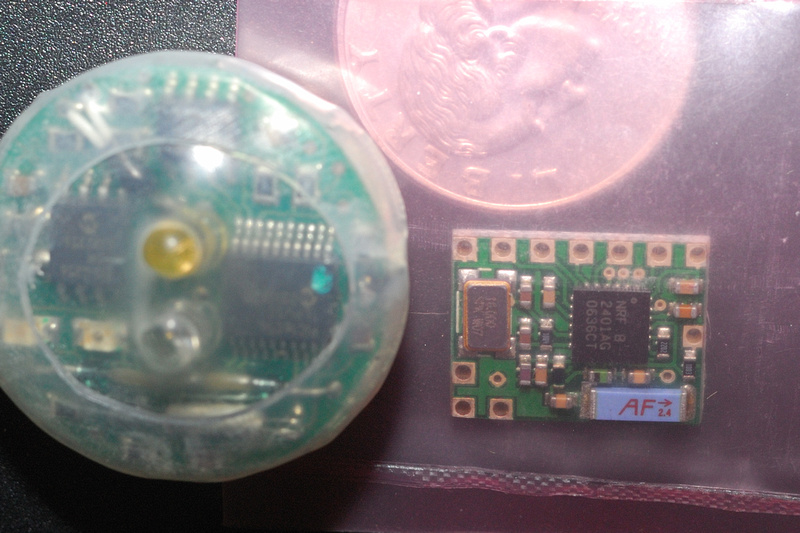http://www.sparkfun.com/commerce/produc ... cts_id=152
I am aware of Anton's PIC unit for the nrF2401,
http://www.mikroe.com/forum/viewtopic.php?t=12096
however there are some assembly statements there that do not easily translate for someone not familiar with assembly...
So would anyone have any dsPIC code for nRF2401A/nrF2401 they would be willing to share before I start with Anton's code and data sheets?
Also dsPIC code for the nRF24L01 could be interesting. I am initially looking to receive/transmit one channel at a time only. The ShockBurst™ mode looks quite interesting to save power though...
The immediate problems I see with modification of Anton's unit is the variable
Code: Select all
FSRCode: Select all
FSR := PortAddress;
asm
BSF FSR,7
end;
ClearBit(INDF,___DATA); // OutputCode: Select all
FSR := PortAddress;
asm
BSF FSR,7
end;
SetBit(INDF,___DATA);Code: Select all
FSR := PortAddress;
ClearBit(INDF,___CE); // Output
ClearBit(INDF,___CS); // Output
ClearBit(INDF,___CLK1); // Output
ClearBit(INDF,___DATA); // Output
asm
BSF FSR,7
end;
// Set up TRIS register
ClearBit(INDF,___CE);I will probably be testing on dsPC30F4013, and then move over to a dsPIC30F2011 target or another small 18-pin version for the transmitter/logger part.












